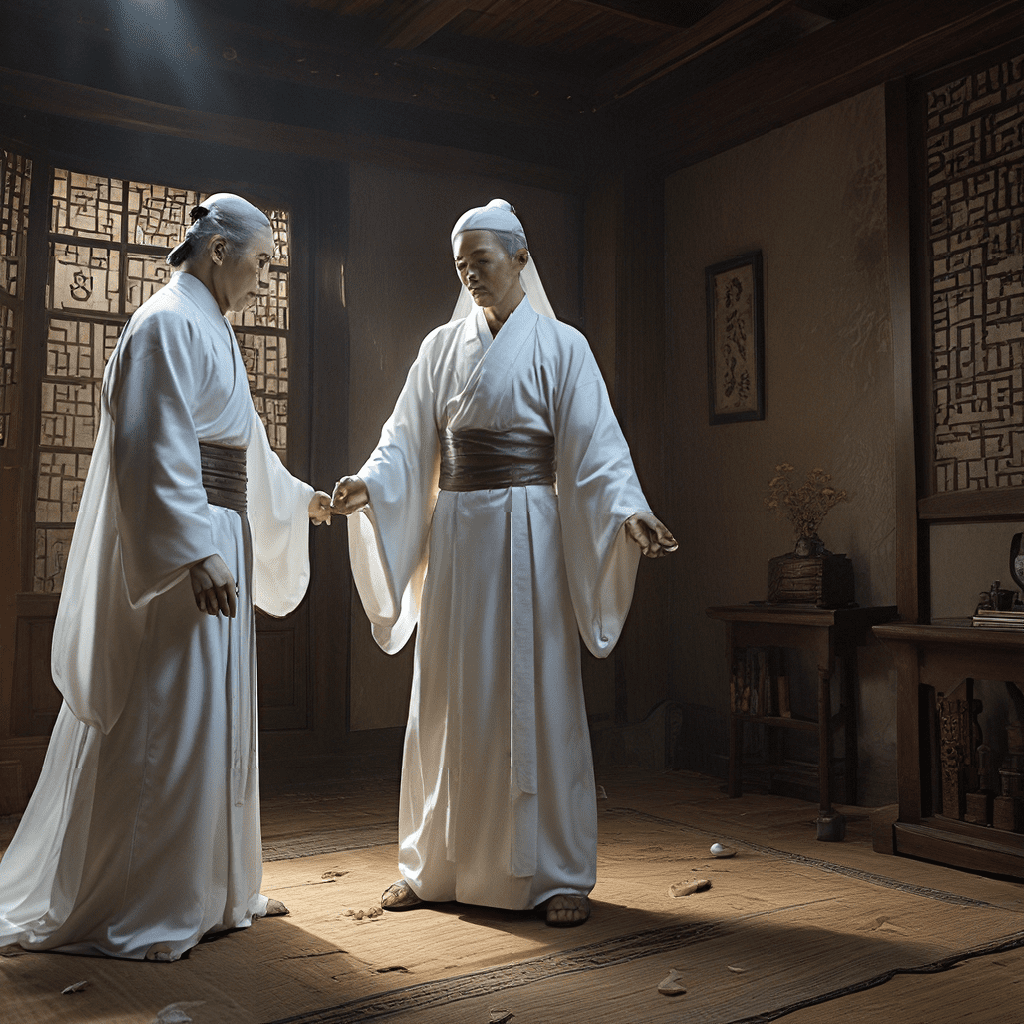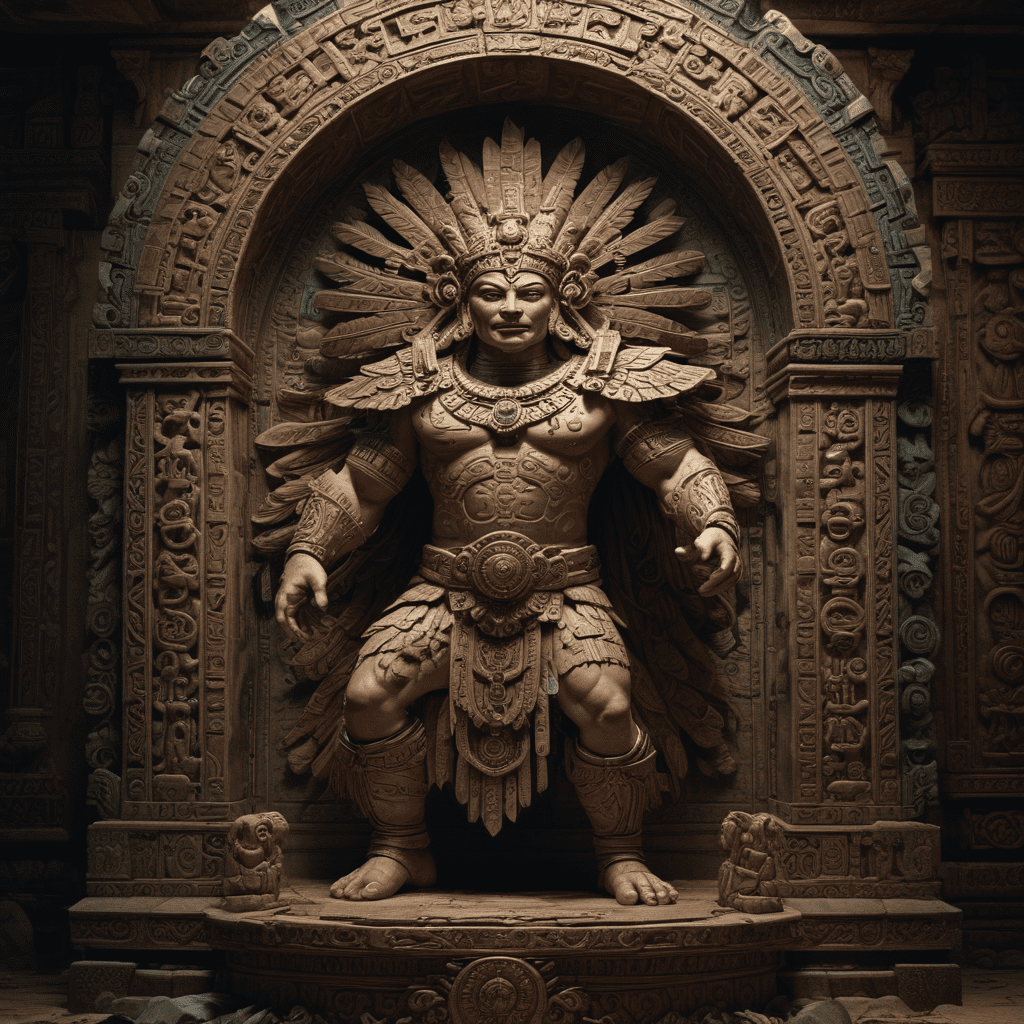Introduction: Unveiling the Gwisin
In the captivating world of Korean folklore, the Gwisin, a ghostly figure, holds a prominent place. Gwisin stories, passed down through generations, are not just spooky tales. They reflect the deep cultural beliefs, anxieties, and hopes of the Korean people. Understanding Gwisin is key to unlocking the heart of Korean culture itself.
The Gwisin in Korean Folklore: A Multifaceted Specter
The term "Gwisin" translates to "ghost" in English, but it's more than just a simple spectral figure in Korean lore. The concept of a Gwisin is fluid and multifaceted, encompassing a wide range of supernatural beings with diverse appearances, motivations, and powers.
From vengeful spirits seeking retribution to mischievous entities playing pranks, the realm of Gwisin is vast and complex. Think of Gwisin as a catch-all term for ghosts, spirits, and other supernatural beings, each with its own unique story and personality.
Origins of the Gwisin Myth: Tracing its Roots
To understand the Gwisin, we must delve into its origins. The earliest traces of Gwisin stories can be found in the ancient shamanistic beliefs of Korea. Shamanism, a spiritual practice that connects with the spirit world, played a central role in pre-modern Korean society. Shamans, believed to have the power to communicate with spirits, would often play a role in appeasing or pacifying Gwisin.
Later, as Buddhism and Confucianism took root in Korea, these belief systems influenced the way people viewed the afterlife and the nature of spirits. Buddhist teachings on reincarnation and the karmic cycle offered a framework for understanding the Gwisin, while Confucian emphasis on order and social harmony provided a context for interpreting their behavior.
The Gwisin myth was also shaped by historical events. Wars, famines, and political upheavals often contributed to a heightened fear of the supernatural, leaving their mark on Gwisin stories. For example, tales of vengeful spirits, often tied to historical injustices, warn against societal transgressions and serve as reminders of past tragedies.
The Role of Gwisin in Korean Society
Gwisin stories were not merely spooky entertainment; they served a crucial social function. They were cautionary tales, teaching lessons about morality, social norms, and the consequences of wrongdoing. The Gwisin was often portrayed as a consequence of greed, betrayal, or disrespect for traditional values.
These stories reflected the anxieties and concerns of Korean society. Fear of the unknown, anxieties about death and the afterlife, and the need for order and harmony were all woven into Gwisin tales.
Themes and Motifs in Gwisin Stories
Across countless Gwisin stories, certain themes and motifs recur, revealing the deeper concerns of Korean culture. Betrayal and its consequences are common themes, emphasizing the importance of loyalty and trust in Korean society. Greed and its ability to lead to misfortune are also central motifs, reminding people to live with moderation and avoid excessive desire.
The afterlife is a frequent subject of Gwisin stories, exploring concepts of karma, reincarnation, and the consequences of one's actions in life. The stories often use haunted locations, like ancient tombs or deserted villages, as settings, creating a sense of mystery and suspense.
Symbolism plays a significant role in Gwisin stories. Animals, like the Gumiho (nine-tailed fox), often symbolize specific traits or powers. The color red, associated with blood and death, plays a symbolic role in many narratives.
The Gwisin stories are not just about ghosts and spirits; they are about human nature, morality, and the anxieties that bind us together.
The Gwisin in Modern Korean Culture
The Gwisin, once primarily confined to folklore and traditional tales, has made its way into modern Korean culture, appearing in movies, television shows, and even popular music. These modern interpretations often reflect the evolving social values and anxieties of contemporary Korean society.
For example, Gwisin stories in modern media often explore themes of social inequality, the pressures of modern life, and the challenges of navigating a rapidly changing world. The Gwisin might represent not just supernatural beings, but also the anxieties and fears of everyday life, such as the fear of job insecurity, the pressure to succeed, or the loneliness of urban life.
Globalization has also influenced the way Gwisin stories are told in modern Korean culture. We see influences from western horror tropes, such as jump scares and graphic violence, incorporated into Korean ghost stories.
While modern Gwisin stories might borrow from western horror conventions, they also retain the unique cultural elements that make Korean ghost stories so captivating. The use of traditional Korean settings, costumes, and mythology, combined with modern storytelling techniques, creates a unique blend of the familiar and the exotic.
The Gwisin and the Human Psyche: Psychological Interpretations
Beyond their cultural significance, Gwisin stories also offer intriguing insights into the human psyche. The fear of ghosts and spirits is a universal human experience that transcends cultures. Psychologists suggest that this fear might stem from our primal instinct for self-preservation, as the unknown and unseen can be perceived as a threat.
The Gwisin, as a representation of our deepest fears and anxieties, provides a fascinating window into the subconscious mind. These stories allow us to explore the dark corners of our own psyche, confronting fears that we might otherwise bury deep within.
For example, tales of vengeful spirits reflect our fear of retribution and the consequences of our actions. Stories about ghostly apparitions that haunt locations of past tragedies might represent our fear of the unknown and the inevitability of death.
By confronting these fears in a safe, fictional space, Gwisin stories help us to process them and to come to terms with our own mortality. They remind us that even in the face of our deepest fears, there is a sense of hope and potential for redemption.
FAQ
Q: What are some examples of specific Gwisin types?
A: Some well-known Gwisin types include:
- Gumiho: A nine-tailed fox spirit often depicted as a beautiful woman who tricks men into falling in love with her.
- Dokkaebi: A mischievous and often trickster-like spirit that can be either helpful or harmful.
- Gwisin: A general term for ghosts that typically appear as pale and translucent figures.
- Hwanghon: A ghost of a living person that appears to someone as a premonition of misfortune or death.
- Ch’ŏngju: A ghost trapped in a state of anger or resentment.
Q: Why are Gwisin stories so popular in Korean culture?
A: Gwisin stories have been a part of Korean culture for centuries, reflecting the country's beliefs, values, and anxieties. These stories provide a way to explore the unknown, confront fears, and learn important lessons about life.
Q: How are Gwisin stories told today?
A: Gwisin stories are still told today, but they are more likely to be found in popular culture than traditional storytelling. Modern interpretations of Gwisin can be found in horror movies, television shows, music, and even video games.
Q: Do you believe in Gwisin?
A: Whether or not you believe in Gwisin is a personal question. The beauty of these stories lies in their ability to tap into our deepest fears and anxieties, regardless of our personal beliefs.



